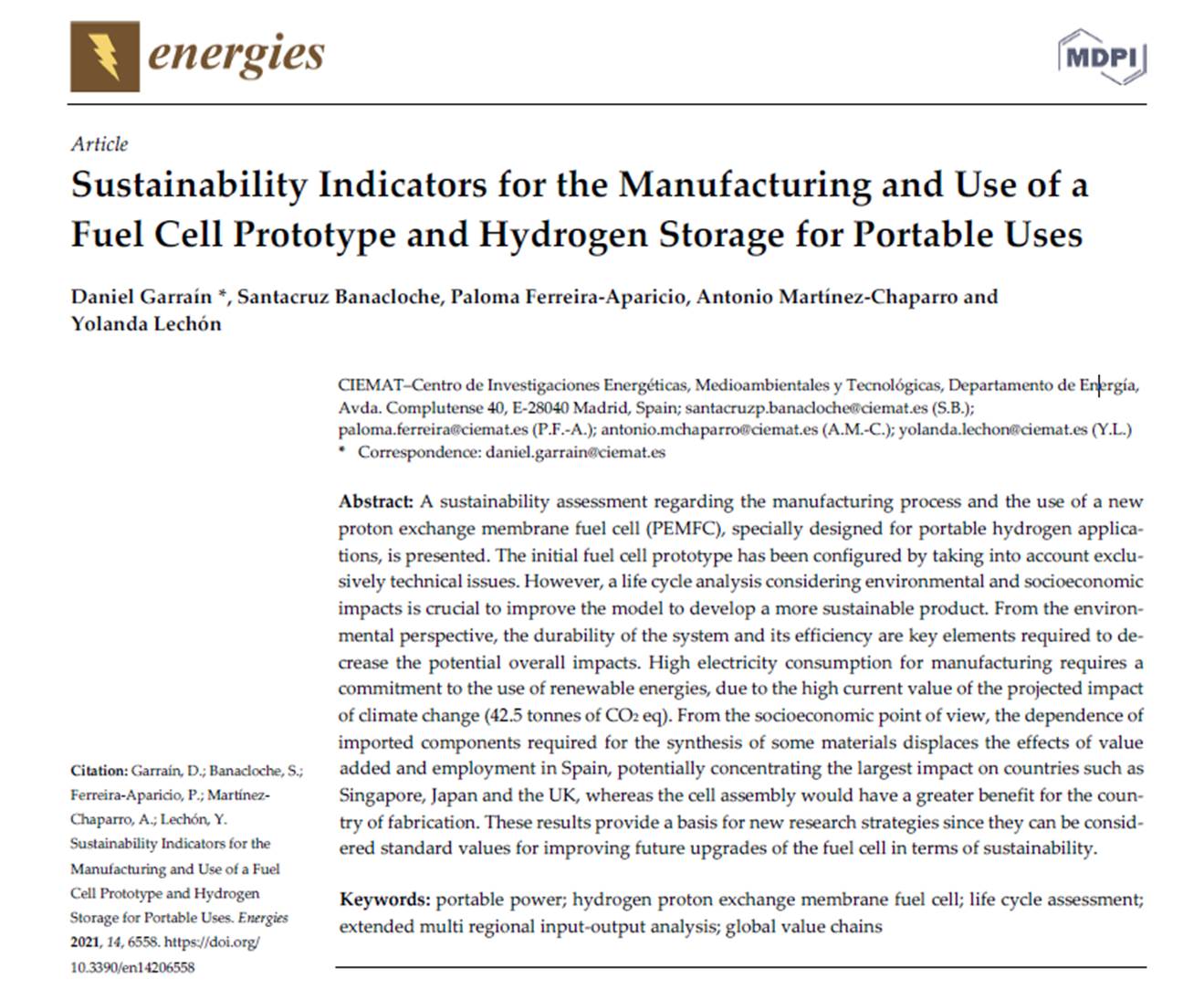Atrás
Sustainability Indicators for the Manufacturing and Use of a Fuel Cell Prototype and Hydrogen Storage for Portable Uses
Sustainability Indicators for the Manufacturing and Use of a Fuel Cell Prototype and Hydrogen Storage for Portable Uses
Daniel Garraín, Santacruz Banacloche, Paloma Ferreira‐Aparicio, Antonio Martínez‐Chaparro and Yolanda Lechón
Energies 2021, 14, 6558.

